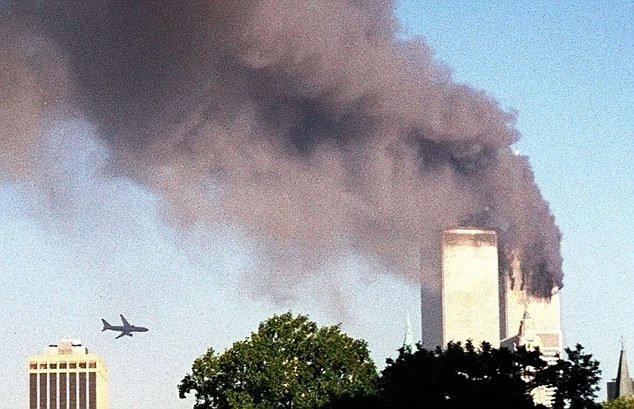
9/11 Intercepted: Documentary – Air Traffic Audio Recordings
9/11: Nine little known facts.
9/11 WTC rescuers at higher risk of cancer, The Lancet reveals.
New audio recordings from 9/11 morning that never-before have been heard are shedding new light on the confusion and desperate quest by aviation and military workers for information as the tragic events unfolded.
The recordings were originally organized for 9/11 Commission investigators, but never released to the general public.
With the occasion of 10-year commemoration of the terror atrocity, the audio tapes provides jarring first-hand accounts of airport workers and the moment they phoned the military about scrambling fighter jets to find planes that were not responding and had disappeared from radars.

Colonel Miles Kara, now retired from U.S. Army and former 9/11 Commission investigator, organized the audio files this year in the National Archives and transcribed them with help from law students and Rutgers Law School Dean John J. Farmer Jr., who served as top counsel to the commission.
The audio files were released by The New York Times this morning.
The recordings begin at 8:13a.m., the moment FAA air traffic controllers in Boston realized American Airlines Flight 11, the jet that crashed into the north tower of the World Trade Center, was not responding.
At 8:19, a cabin crew member on the doomed plane, Betty Ong, contacted the airline’s reservations agents in Cary, North Carolina.
“Um, the cockpit’s not answering. Somebody’s stabbed in business class, and we can’t breathe in business and um I think there is Mace that we can’t breathe. I don’t know, I think we’re getting hijacked.”
Immediately after 9:00 a.m. and 16 minutes after Flight 11 crashed into the World Trade Center, an exchange was recorded between a radio caller and a New York air traffic control manager.
“Can you, can you see a guy at about 4,000 feet, about 5 east of the airport right now, looks like he’s-“
“Yeah, I see him,” the traffic control manager said.
“Do you see that guy, look, is he descending into the building also?” the caller asked.
The traffic control manager said:
“He’s descending really quick too, yeah. Forty-five hundred right now, he just dropped 800 feet in like, like one, one sweep.”
“What kind of airplane is that, can you guys tell?”
“I don’t know, I’ll read it out in a minute,” the manager said.
But it was too late, because that plane was United Airlines Flight 175, which crashed into the south tower at 9:03.
“The whole building just came apart,” the manager said.
The audio files also detail how some FAA officials were still in the dark, as aviation officials scrambled to get the U.S. military involved seconds before the south tower was hit.
“Why, what’s going on?” a man at the FAA headquarters in Herndon, Virginia, asked at 9:01 a.m.
[youtube bHyecoBKPiA]
The 9/11 Commission found out on those recordings that military officials were not kept informed of the events, with many not knowing about the last three hijacked flights until after they had crashed.
It was reported that military was not informed that officials had lost contact with American Airlines Flight 77 – which crashed into the Pentagon – until 30 minutes later.
About three minutes before Flight 77’s impact, an FAA official is heard saying:
”They said that it was east of York. And I don’t even know what state that is.”
At 10:32am, the shoot-down order was issued by Vice President Dick Cheney approximately a half hour after United Flight 93 crashed in Shanksville, Pennsylvania.
However, two key recordings will remain unreleased.
One is the 30-minute audio clip of the cockpit from United Flight 93.
The other is a classified conference call between high-ranking White House officials like Vice President Dick Cheney and then-Defense Secretary Donald Rumsfeld.
The release of the audio files comes as Reuters reported the vast majority of the 9/11 Commission’s investigative records remain sealed at the National Archives in Washington, even though the commission had directed the archives to make most of the material public in 2009.
The National Archives’ failure to release the material presents a hurdle for historians and others seeking to plumb one of the most dramatic events in modern American history.
The 575 cubic feet of records were in large part the basis for the commission’s public report, issued July 22, 2004.
The 9/11 Commission, formally known as the National Commission on Terrorist Attacks Upon the United States, was established by Congress in late 2002 to investigate the events leading up to the 9/11 attacks, the pre-attack effectiveness of intelligence agencies and the Federal Bureau of Investigation, and the government’s emergency response.
Matt Fulgham, assistant director of the archives’ center for legislative affairs which has oversight of the commission documents, said during an interview this week that more than a third of the material has been reviewed for possible release.
However, many of those documents have been withheld or heavily redacted, and the released material includes documents that already were in the public domain, such as press articles.
9/11 Commission items which are still not public include a 30-page summary of an April 29, 2004 interview by all 10 commissioners with President George W. Bush and Vice President Dick Cheney, conducted in the White House’s Oval Office.
That moment was the only time the two were formally questioned about the events surrounding the attacks.
Several former 9/11 Commission staff members said that because there is no comprehensive effort to unseal the remaining material, portions of the records the commission had hoped would be available by now to scholars and the public instead will remain sealed indefinitely